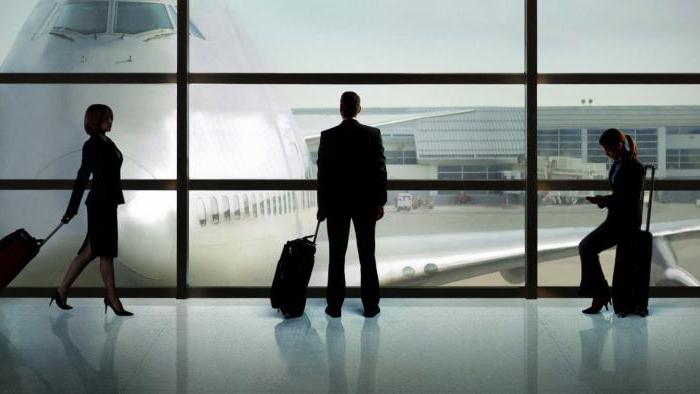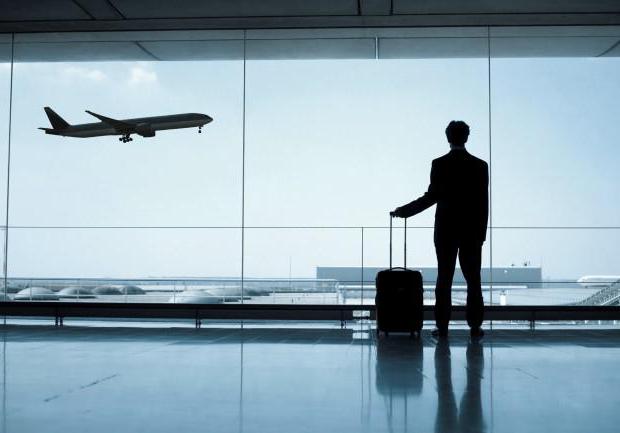There are several reasons why the average wage payment is applied. A business trip refers to just such. Travel related to work is not uncommon. Of course, the protection of the rights of an employee performing this type of work is regulated by law. And the procedure for calculating travel expenses and per diem has been established. The employer has no right to violate it.
What is a business trip?
A business trip means an employee’s trip for a certain period of time outside the place of his main job. All this in order to carry out any field work. An example is a business trip to another city in order to persuade a new buyer or conduct an inspection of a point of sale. Also, a trip to another country, for example, to exchange experience between employees, can be considered a business trip.
However, it is worth remembering that if the work was originally associated with traveling, then trips to other places cannot be considered a business trip. Accordingly, the calculation of travel expenses is not needed here. It is also worth noting that the direction of the employee, adopted with the execution of the civil contract, will not be considered a business trip.

Business trips: laws governing them
The employer and employee who are associated with business trips need to know that the basic concepts and calculation rules are regulated by the Labor Code of the Russian Federation. These include:
- Article 166. Here the concept of official business trip is introduced.
- Article 167. This clause stipulates the guarantees of the employee sent on a business trip.
- Article 153. This article regulates payment for work on weekends and holidays.
Of course, there are other articles that directly or indirectly affect many issues related to travel. In particular, they answer the question: “How are travel allowances accrued and what are the features of their payment?”, However, the above are traditionally referred to as the main ones.

Who should not be sent on a business trip
Before you understand how travel allowances are calculated, you should understand which of the employees cannot be sent on trips without their consent, and who should not be sent even with the written agreement of the employee.
Pregnant women and persons under eighteen years of age may not be sent on business trips. There are also rules for the following categories of workers:
- Women with children under three years old.
- Single parents raising a child or children who have not reached the age of five.
- Employees dependent on children with disabilities.
- Workers with a medical certificate that they care for a family member.
The above categories of employees can be sent on a business trip only with written consent and after a full medical examination.

Documents required for processing a business trip
In order to legally send an employee on a business trip, it is necessary to correctly draw up documents. These include an order to be sent on a business trip, a job assignment and documents that actually confirm the employee’s stay on a business trip.
It is worth noting that a job assignment from 2015 is not required to be executed, this is allowed by law. However, in its internal procedure for processing documentation, the employer may adhere to the old rules. Such maintenance is appropriate for large organizations.For example, this kind of document can be compiled by the head of the structural unit indicating the need for a business trip. In the future, this documentation is reviewed by higher management.
The order to be sent on a business trip is an integral part of the document flow when a business trip occurs. The documentation must indicate the details of the organization, employee data, goals and dates of the trip. An order is filled in a unified form No. T-9. In the case of a job assignment, this fact is also indicated in the order.
Documents that confirm the duration of a business trip are considered mainly travel documents, such as train tickets. If the employee moves by personal transport, a memo is drawn up.
What to do if you need to extend the trip?
There are situations when it is necessary to increase the length of an employee’s business trip. In this case, you need to draw up an additional package of documents. These include:
- Order to extend the trip. This document is filled in in any form. The reason for the extension of the trip and the new end date should be indicated here.
- Written permission to extend the trip from the persons indicated above.
- Employee extension notice. This can be done by sending a fax with an order.
- Calculation of travel and per diem for an additional period and the transfer of funds.

Payments due to an employee on a business trip
An employee who has been sent on a business trip is entitled to several types of payments. These include:
- Per diem.
- Directly pay travel expenses for each day attributable to work on departure.
- Reimbursement of expenses incurred by an employee in connection with a business trip, for example, amounts for tickets or rental housing.
The first steps of accounting: per diem, travel and advance
After the direction order is ready, the employee must be given an advance payment. It includes per diem for the entire period of the trip, as well as the estimated amount of expenses. It is worth noting that the issuance can be carried out both in cash and by transferring to the employee’s card.
How are travel allowances calculated? They are paid at the end of the month along with the rest of the salary. This is due to the fact that the calculation of this type of payment is carried out after the close of the month, regardless of when the employee reported.
After the employee returned, the accountant conducts a recalculation. The results are summarized, it turns out what amounts have been spent. In conclusion, the employee is either paid extra for the missing amount or withhold excessively paid out.

Payment of business trips. Basic formula
How are travel allowances calculated? Before you charge any funds to the employee, you should calculate them. It should be remembered that payment is made on average earnings. The trip is paid by the amounts calculated according to the formula. For calculation, the following indicators are taken:
- Payments that are taken into account for calculating average earnings. A complete list can be found in the Regulation on the features of calculating average earnings. In most cases, this is a salary, personal allowances, minus one-time bonuses and material assistance.
- The number of days of the billing period.
- The number of business trip days.
To calculate travel expenses, the payments described in the first paragraph are taken, divided by the number of days of the settlement period. This indicator indicates how much the employee receives for one day of business trip. Then this indicator is multiplied by the total number of working days on departure.
Number of days: an important factor!
It should be noted that the first day of a business trip is the day on which tickets are dispatched. That is, if the plane takes off on the twentieth day at ten o’clock in the evening, then this day is calculated in full.
The rules for accruing travel allowances also imply that if time is required to travel to the place of departure, then it must also be paid in full.
An example is a situation in which an employee needs to fly out of an airport outside the city. In order to catch a plane, an employee must leave at 23 hours 30 minutes. In this case, this day should also be paid in full, despite the fact that the departure of the aircraft is planned only the next day.
Payment of business trips. Holidays
It should be noted that payment of such a plan as per diem, travel allowance on holidays, requires special clarification. So, per diem is paid for every day that a person spends on a business trip. This includes holidays and weekends. Despite the fact that the employee did not do work these days.
Payment of business trips on weekends may not be carried out. If the employee worked on his day off, then payment is made in the same way as for work on holidays and weekends outside of a business trip. That is, for these days the employee is entitled to double payment or extra time off, but with a single payment of the day.

Travel calculation example
To understand the situation, it is better to use examples. The accrual of travel allowances can be explained on a typical situation.
An employee of the enterprise was sent to Kostroma on a business trip from April 1, 2017 to April 12, 2017. At the same time, during this period there were eight working days, as the company had a five-day working week, and the employee was resting on weekends.
During the billing period, the employee worked for 230 days, while earning 360,000 rubles.
With this calculation, the daily payment for the business trip of D. Sergeyev will be 1,565 rubles 22 kopecks. That is, in eight days, the employee will receive 12,521 rubles 76 kopecks of business travelers.
Travel accrual: postings
Payment and accrual of travel allowances can be reflected in the following transactions:
- Debit 26 (20, 23, 25) - Credit 71. This entry reflects the adoption of travel expenses on the date the advance report was submitted.
- Debit 71 - Credit 50 (51) - describes the process of paying cash on the advance report to the employee.
- Debit 26 (20, 23, 25) - Credit 70. Accrued business trip employee.
What is a per diem? Accrual Features
Per diem is the amount that is aimed at reimbursing the employee for expenses associated with living in another locality. Their payment is regulated by law. Payment is made for each day you are on a business trip, including days on the way.
The amount of per diem is determined by each employer independently. For enterprises whose activities are carried out outside the Russian Federation, it is advisable to include in the documents of the company and information on the amount of per diem for foreign business trips.
It is worth noting that the per diem prescribed for trips abroad is charged for the day when the employee leaves the Russian Federation, and for the day when he arrives back. That is, when arriving in the country at nine in the morning, the whole day will still be paid for the amount of daily subsistence allowance for a trip abroad.
Per diem per day trip
An interesting situation arises if an employee is forced to go on a business trip lasting a day. In this case, there is a peculiarity of per diem payment. For example, a trip abroad is paid in the amount of fifty percent of the full amount of daily subsistence allowance.
At the same time, a business trip within the country is less profitable. Per diems for this day are not charged. However, it is worth remembering that this is relevant only when the day of departure and arrival coincide. If the departure was at eleven in the evening of the previous day, then the trip is considered a two-day.
